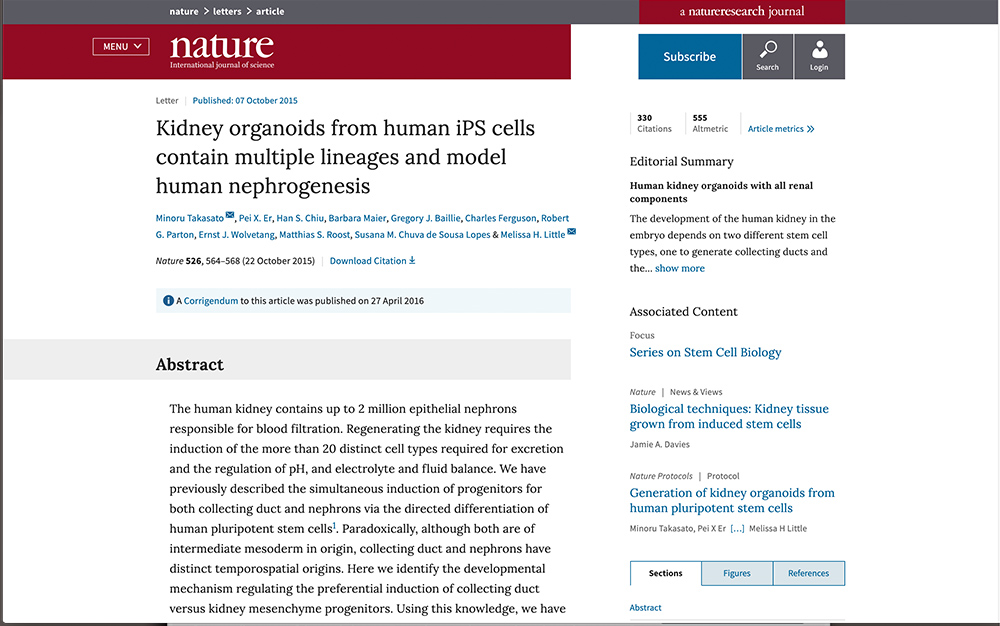Kidney organoids from human iPS cells contain multiple lineages and model human nephrogenesis
Publication Summary:
The human kidney contains up to 2 million epithelial nephrons responsible for blood filtration. Regenerating the kidney requires the induction of the more than 20 distinct cell types required for excretion and the regulation of pH, and electrolyte and fluid balance. We have previously described the simultaneous induction of progenitors for both collecting duct and nephrons via the directed differentiation of human pluripotent stem cells. Paradoxically, although both are of intermediate mesoderm in origin, collecting duct and nephrons have distinct temporospatial origins. Here we identify the developmental mechanism regulating the preferential induction of collecting duct versus kidney mesenchyme progenitors. Using this knowledge, we have generated kidney organoids that contain nephrons associated with a collecting duct network surrounded by renal interstitium and endothelial cells. Within these organoids, individual nephrons segment into distal and proximal tubules, early loops of Henle, and glomeruli containing podocytes elaborating foot processes and undergoing vascularization. When transcription profiles of kidney organoids were compared to human fetal tissues, they showed highest congruence with first trimester human kidney. Furthermore, the proximal tubules endocytose dextran and differentially apoptose in response to cisplatin, a nephrotoxicant. Such kidney organoids represent powerful models of the human organ for future applications, including nephrotoxicity screening, disease modelling and as a source of cells for therapy
View Publication
